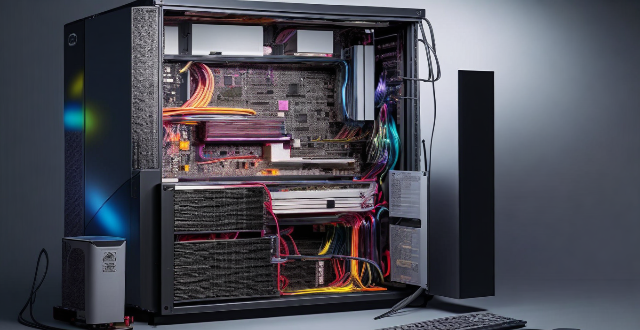Assembling a computer from scratch is an exciting and rewarding experience that requires careful planning and attention to detail. The process involves researching and selecting compatible components, preparing your workspace, installing the motherboard, CPU, heatsink/cooler, RAM, storage drives, power supply unit (PSU), graphics card, and final wiring/connectors. Troubleshooting tips include double-checking connections, monitoring the boot sequence, utilizing online resources, adding components one by one when testing, and consulting manuals. Tips for beginners include starting simple, following tutorials, taking your time, having a backup plan, and enjoying the process. With proper preparation and patience, anyone can successfully build their dream machine.

Can I Assemble My Own Computer Without Any Prior Experience?
Introduction
Assembling a computer from scratch can be an exciting and rewarding experience, but it requires careful planning and attention to detail. If you're new to the process, there are several factors to consider before diving in. In this guide, we'll explore the key steps involved in building your own PC and offer tips for beginners.
Key Steps Involved in Building a PC
Research and Planning
1. Choose Your Parts: Select the components that will make up your system, such as the CPU, GPU, RAM, storage, and motherboard.
2. Ensure Compatibility: Make sure all parts are compatible with each other, especially the CPU and motherboard.
3. Budget Considerations: Determine how much you want to spend on each component and stick to your budget.
4. Performance Goals: Decide what you'll use the computer for (gaming, video editing, etc.) to guide your choices.
5. Futureproofing: Consider upgrading options down the line to extend the lifespan of your build.
Assembly Process
1. Prepare Your Workspace: Ensure you have a clean, well-lit area with enough room to work comfortably.
2. Static Discharge Precautions: Use anti-static mats and wrist straps to protect sensitive electronics.
3. Install Motherboard: Begin by placing the motherboard into the case according to manufacturer instructions.
4. CPU Installation: Carefully insert the processor into its slot on the motherboard following proper orientation guidelines.
5. Heatsink/Cooler Placement: Affix the cooling solution onto the CPU after applying thermal paste if needed.
6. RAM Installation: Insert memory sticks into appropriate slots on the motherboard.
7. Storage Drives: Mount hard drives or SSDs into designated locations within the case.
8. Power Supply Unit (PSU): Install the PSU into its spot in the case and connect necessary cables.
9. Graphics Card Installation: Slot your GPU into the PCIe slot on the motherboard if applicable.
10. Final Wiring & Connectors: Connect all power and data cables as required by various components.
11. Boot Up and Test: Power on your system to run a test and install an operating system.
Troubleshooting Tips
1. Double-Check Connections: Ensure all cables are securely plugged in where they should be.
2. Monitor Boot Sequence: Pay attention to error messages during startup to diagnose issues.
3. Online Resources: Utilize online forums and guides for troubleshooting specific problems.
4. One Component at a Time: Add components one by one when testing to isolate any potential problems.
5. Consult Manuals: Keep manuals handy for reference during assembly and troubleshooting.
Tips for Beginners
1. Start Simple: Choose a basic setup to begin with; you can always upgrade later.
2. Follow Tutorials: Watch video tutorials or read step-by-step guides before starting.
3. Take Your Time: Don't rush; carefully follow each step to avoid mistakes.
4. Backup Plan: Have a backup plan in case something goes wrong, like a friend who can help or professional services nearby.
5. Enjoy the Process: Remember that building your own PC is a learning experience; enjoy every step of the journey!
In conclusion, while assembling a computer without prior experience may seem daunting, it's entirely feasible with proper preparation and patience. By breaking down the process into manageable steps and being mindful of common pitfalls, anyone can successfully build their dream machine.